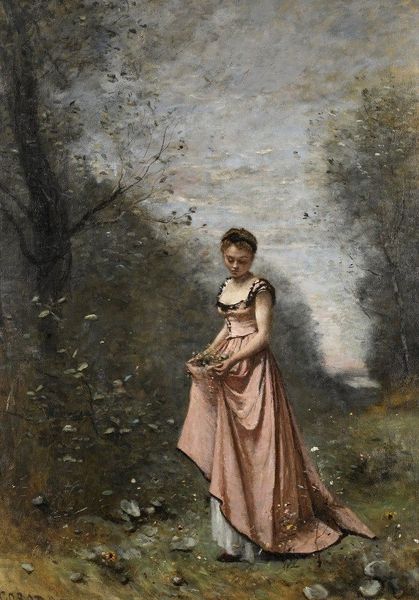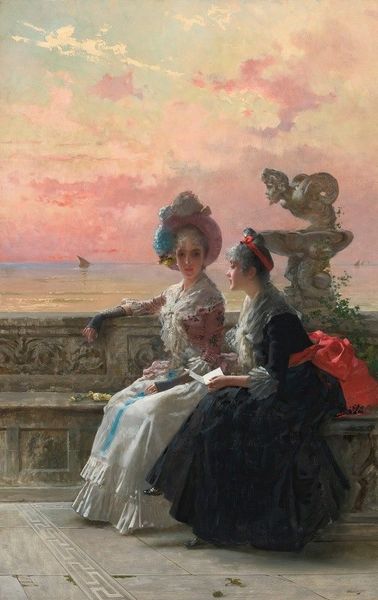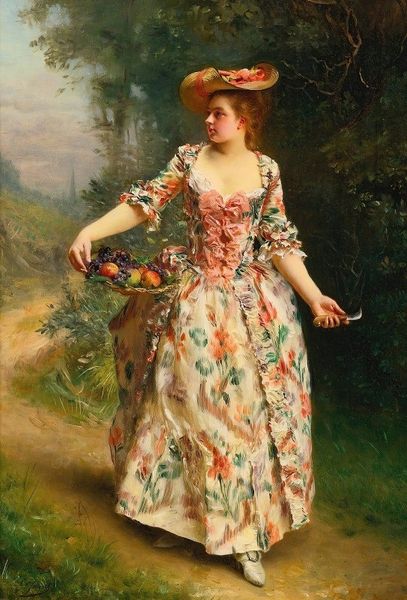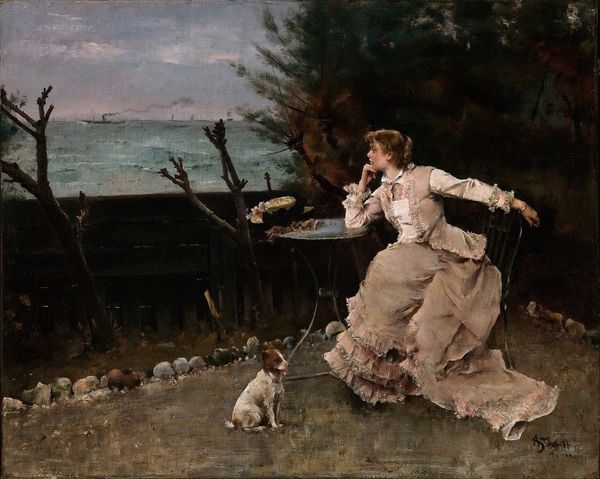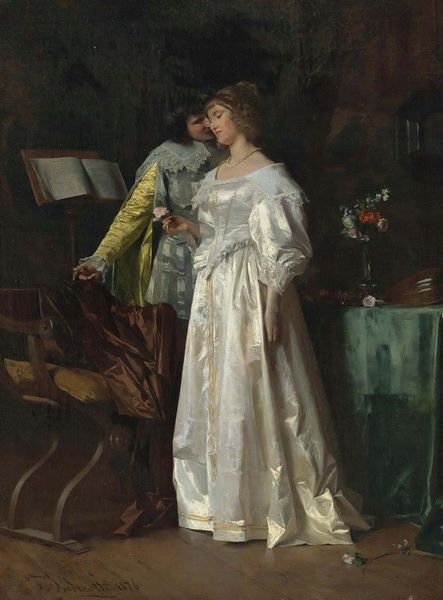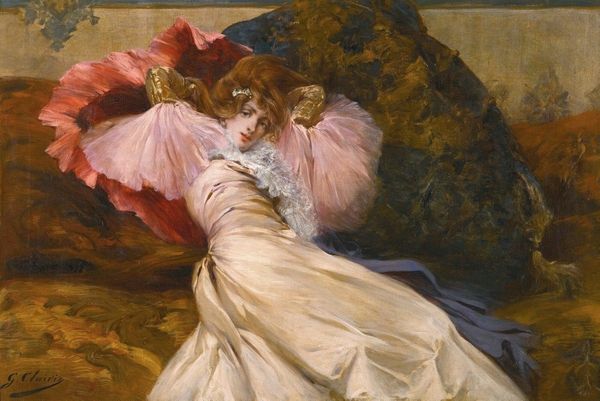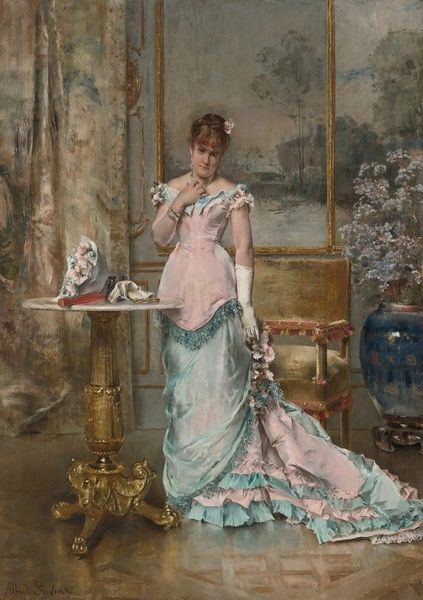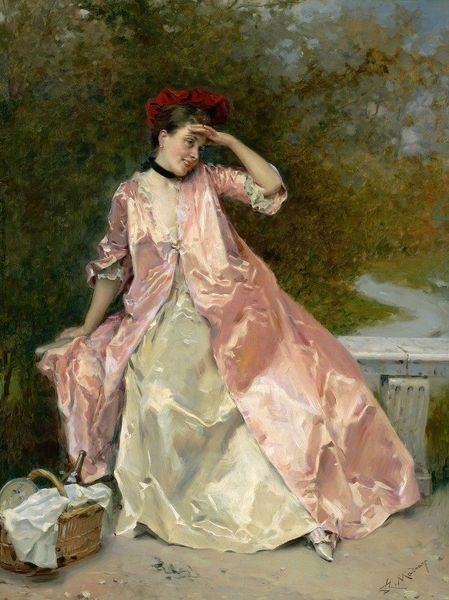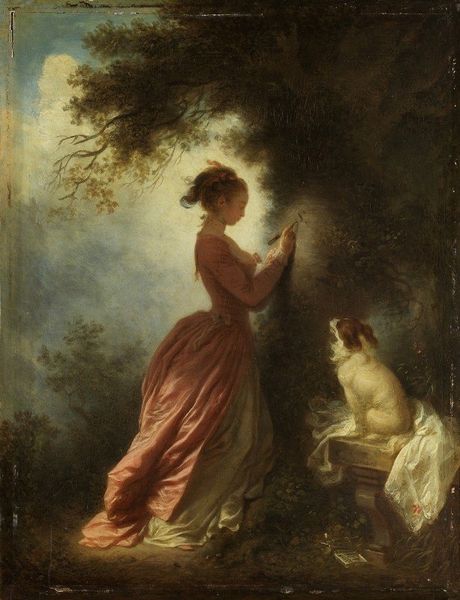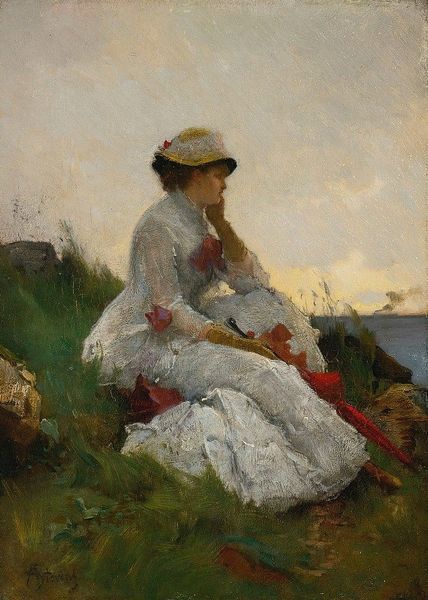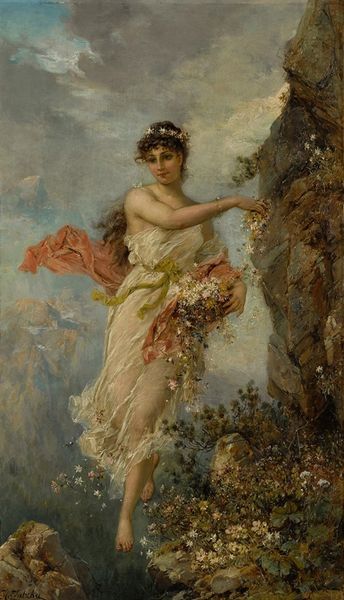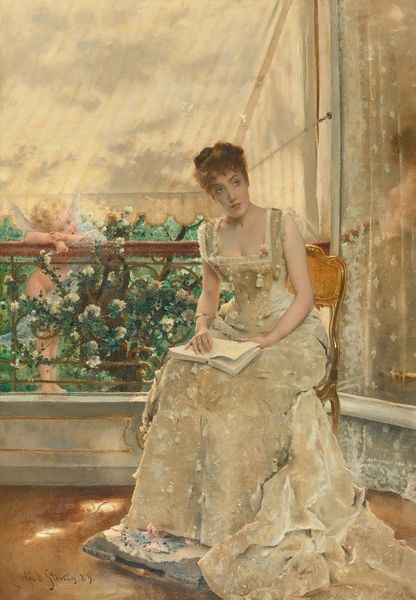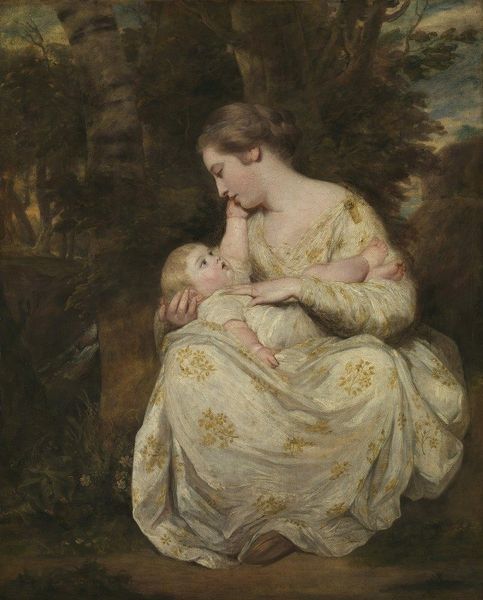
painting, plein-air, oil-paint, impasto
#
portrait
#
painting
#
plein-air
#
oil-paint
#
landscape
#
painted
#
oil painting
#
impasto
#
underpainting
#
romanticism
#
painting painterly
#
genre-painting
Copyright: Public Domain: Artvee
Curator: The piece before us, whose title translates to "An Evening at the Sea," comes to us from the hand of Alfred Stevens. Although undated, its stylistic features strongly suggest its creation occurred near the apex of Romanticism, perhaps straddling into early Impressionism. It presents as a scene painted "en plein air"—the impasto strokes in oil suggesting swift execution amidst a naturally lit, outdoor locale. Editor: It certainly evokes the twilight mood effectively! The figures feel like specters emerging from the gloom, a sense heightened by that sliver of moon. A sort of wistful romance permeates the piece; do you think Stevens aimed for a portrait or a more generalized genre scene? Curator: That is a fantastic point. I am quite struck by its ambiguous narrative. Though on its surface, we witness two figures--the central woman standing, adorned in a gown and contemplative pose, and a second figure seated some yards away on what appears to be a beachside or boardwalk-- the semiotics are far more profound. The seated woman perhaps offers a symbolic suggestion to the protagonist: to linger in the moment versus casting herself in a performance? Note her open parasol... almost like a regal statement. Editor: That is an intriguing reading of the seated woman and an interpretation I had not considered. I find the way that Stevens presents the standing figure – the almost classical drapery and her delicate expression, combined with the more casual impasto of the setting – lends her a contemporary nobility in keeping with romantic ideals. Are we, perhaps, witnessing some moment of societal unease where traditions were questioned and decorum was loosening in social life? Curator: The Romantic influence, I think, shines most brightly in how the landscape itself is used. The vast, indeterminate sea and sky pressing in lend themselves to those common symbolic devices—isolation and awe and a contemplation of self. If you accept this approach, you might posit her placement on a rise--separate from the second figure's activity at the shoreline--suggests a turning point. In short, our reading of social upheaval has merit! Editor: I'm intrigued by this blending of personal feeling with a nascent record of changing society, almost a "proto-social-commentary-portrait." Alfred Stevens really encourages us to engage beyond a superficial appreciation. Curator: Yes. This artwork serves to demonstrate how symbols embedded in portraiture work, becoming powerful windows onto social awareness—a key example of how psychological landscapes can reveal cultural continuities. Editor: Indeed, pondering such scenes highlights the vital and sometimes contentious link between art, audience, and cultural context. A rewarding glimpse!
Comments
No comments
Be the first to comment and join the conversation on the ultimate creative platform.
